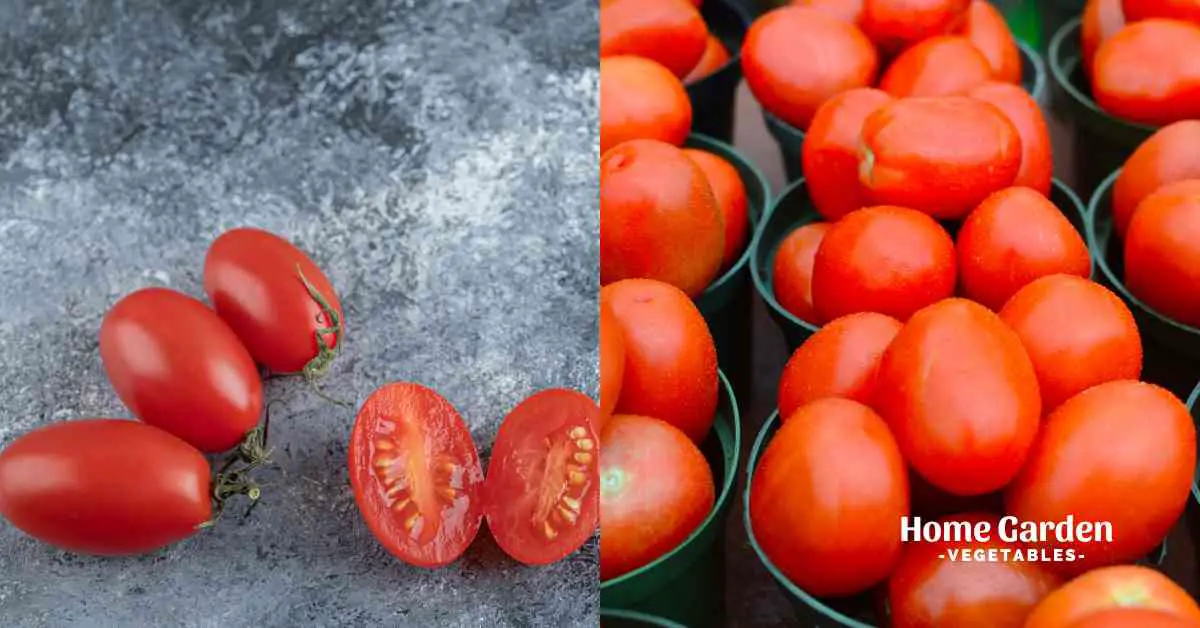There’s no arguing that tomatoes are the ideal ingredient for just about every cuisine, thanks to their numerous kinds and diverse flavour characteristics. This fruit is incredibly adaptable and may be roasted, grilled, eaten raw, or sautéed as a nutritious snack.
You might be thinking, “What’s the difference?” with so many tomato types to pick from. This guide to the two main varieties of tomatoes and their purposes has been put together to help you pick the right tomato for your next cuisine.
Reader Poll: What online courses would interest you?
Amish Paste Tomato
These are acorn-shaped tomatoes with a rich crimson color. Their vines yield fruits that are medium-sized, weighing 8 to 12 ounces. The flesh of these tomatoes is thick and there are few seeds. When staked, it performs better.
Amish Paste is a kind of heirloom tomato. The delicious taste and rich, juicy texture of these tomatoes are well-known. It’s a variation that’s indeterminate. The fruit is about 8 ounces in weight, although it can be much larger. The fruit is delicious fresh off the tree, in sandwiches and salads, as well as in purees and sauces.
Growing Amish Paste Tomato
They take around 90 days to mature from the moment they are transplanted. Amish Paste should be started indoors around 6 weeks before you wish to transfer it outside.
Subscribe to our newsletter!
Sow your seeds about a half-inch deep in a well-drained soilless starter compost. The seeds like a soil temperature of 65-90 degrees Fahrenheit. The faster the germination, the warmer the soil is.
These tomatoes demand soil that is fertile, well-drained, and rich in organic content. Your soil should preferably be a loamy or rich clay type for the best crops.
It’s appropriate to transplant once the last spring frost has passed and the overnight temperature of your area is above 50 degrees F. Plants might be stressed by cold air temperatures and soil.
When it comes to transplanting, choose seedlings that are strong, have a small height, and are bright green. The seedlings of tomatoes that have already begun to blossom should not be chosen. Seedlings that are too developed before transplantation sometimes experience a slowdown in growth thereafter.
Uses of Amish Paste Tomatoes
- Because of their less luscious flesh, Amish paste tomatoes are planted solely for the purpose of manufacturing tomato paste and sauces, as the name indicates.
- Because of their lower water content, these tomatoes are also popular for making sun-dried tomatoes.
- Amish paste tomatoes are grown for canning, not only pastes, but whole tomatoes as well to prepare the sauce in the off-season.
- Stuffing is another underappreciated use for paste tomatoes. The advantage of utilizing these tomatoes in this manner is that the flesh will not leak too many liquids, which will wet down your stuffing. However, the main drawback is that their long design makes filling a little difficult.
Roma Tomatoes
This type of tomato, also known as the Roma plum tomato, is a plum tomato that is widely used for canning and making paste as it is slender and firm in quality.
They have an elongated egg-like form and may reach a length of three inches. Roma tomatoes have meaty flesh with fewer seeds, high acid, and sugar levels. They also have a low moisture content as compared to other tomato cultivars, making them suitable for boiling down into tomato paste or sauce. A Roma tomato can weigh anywhere from 2 and 5 ounces. They’re a little bigger than cherry tomatoes.
Growing Roma Tomatoes
A paste tomato is a Roma tomato. They feature fewer seeds, a stronger fruit wall, and denser, but grainier, flesh.
A long growing season is required for Roma tomato plants. They should be started six to eight weeks before the latest frost date inside. Sow the seeds approximately 12 inches deep in a wet, well-drained starting mix at 65°F to 90°F for optimal results.
Use artificial lights or place the seedlings close to a south-facing window. Seedling stems will elongate and lean over if they do not get enough light.
After genuine leaves show, thin out the seedlings and keep them two inches apart in the mix. You may begin hardening the seedlings when they reach 5 inches tall and are 6 to 8 weeks old.
Uses of Roma Tomatoes
- Roma tomatoes are the archetypal Italian plum tomato, rich in flavor and tangy, garden-fresh tomato flavor.
- Roma tomatoes are well known for being perfect to make sauces
- Making a few jars of salsa from fresh Roma tomatoes is a terrific way to use up any leftover Roma tomatoes in your kitchen. Tomato salsa from your own garden is well with simple tortilla chips or cheesy nachos.
- If you’re a lover of the traditional Canadian Caesar, use your Roma tomatoes to make Fresh Tomato Virgin Caesars.
- When it comes to homemade tomato soup, Roma tomatoes are the best since they have the finest flavor when roasted. To make the soup as tasty as possible.
Tips To Grow Good Tomatoes
- If you’re growing tomatoes from seed, provide plenty of area for the seedlings to spread out by thinning them down to one healthy plant per cell or tiny pot. Their development is stifled by overcrowding, which strains them and leads to sickness later on.
- Tomato seedlings require bright, direct light to grow. Because the days are short in the winter, even placing them near a bright window may not be enough to supply them with enough natural light.
- To produce robust stems, tomato plants must move and swing in the breeze. This occurs naturally outside, but if you’re starting seedlings indoors, you’ll need to give some sort of air circulation.
Conclusion
Amish paste and Roma tomatoes are bred primarily for creating pastes, although they may also be used for sun-drying, sauces, and stuffing. Some gardeners set aside room for a number of paste tomato plants together, while others never plant them at all.

